The discovery of cloud seeding
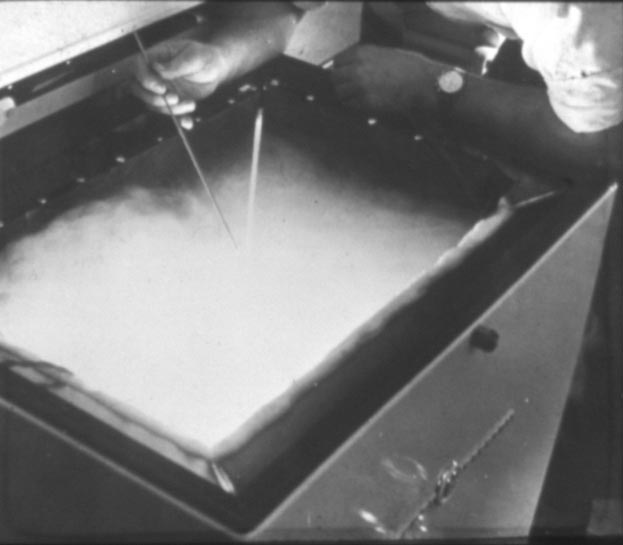
In 1946 a scientist named Vincent J. Schaefer was assigned a laboratory
experiment at the General Electric Research labs in Schenectady, New York. He
was told to make a supercooled cloud in a chest freezer. That was easy. Just
blow in. He was also told to make that cloud snow. That was hard. He tried
many things for several months and nothing worked very well.
Then one hot summer day (July 13, 1946) his freezer was warming up too much.
So he decided to cool it by putting in a slab of dry ice (solid carbon dioxide).
Suddenly he had snow crystals all over the place! He realized, "That's what I
have been trying to do all these months!"
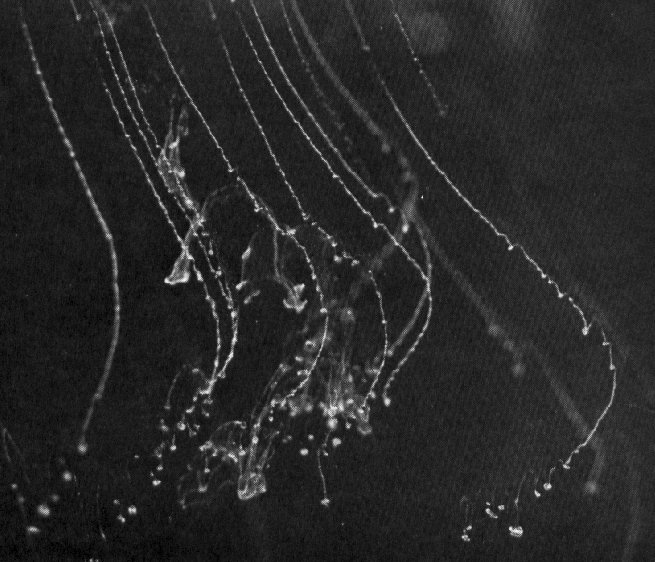
Eventually he found that he could scrape a piece of dry ice above the freezer
so that small fragments would fall into the cloud and make white smoke trails.
[The shape of the white cloud from the bubble is an expanding jet
of smoke.
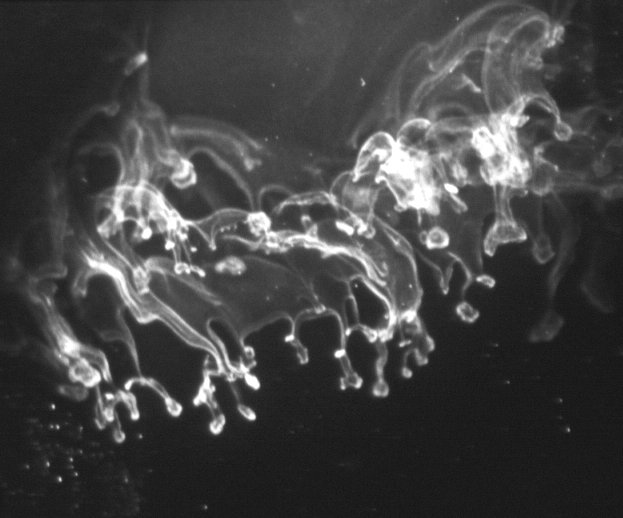
If a chilled glass rod is used, there is a different smoke pattern.]
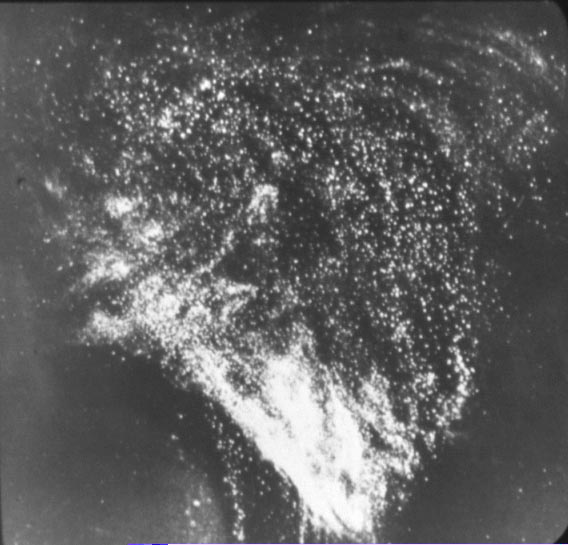
That smoke trail then behaved just like what you saw from the bubble popping.
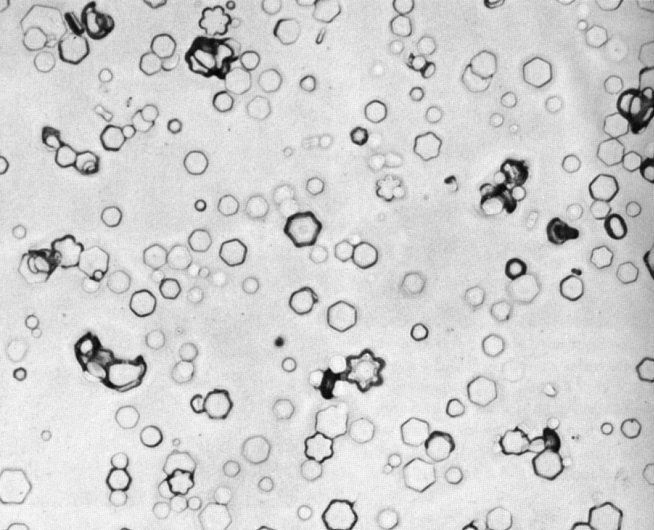
It expands out into hundreds of millions of sparkling ice crystals.
So the process of cloud seeding was discovered by accident. About half of the
important discoveries of science are by accident. It takes someone who is
observant, who recognizes that something unusual has happened, and who is then
curious enough to find out why. That is how science makes many of its biggest
advances.
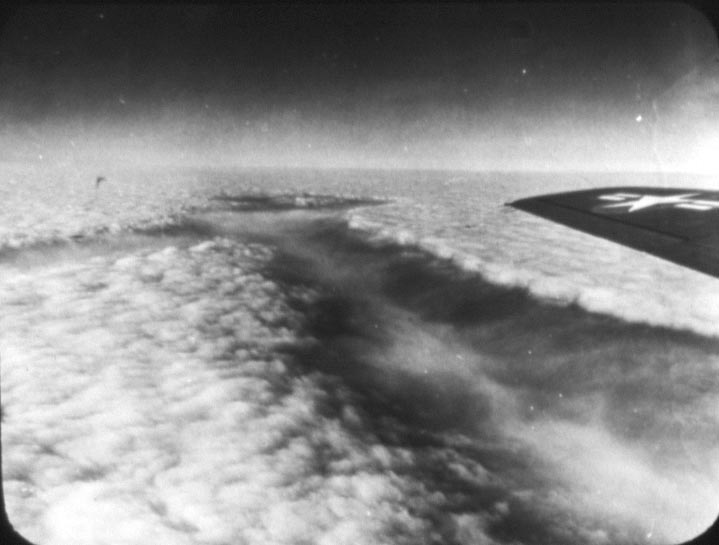
On November 13 of that year, 1946, the team got up in an airplane and dropped
dry ice pellets into a real supercooled cloud over western
[Greylock Mtn.] Massachusetts. That carved a long hole in the cloud
because of the hunger of the snow crystals for the supercooled water. And it
only snowed out of that part of the cloud [fuzzy white in center
of hole]. So the first cloud seeding experiment was a visible success.
[Actually this illustration is from a later experiment in Project
Cirrus.]
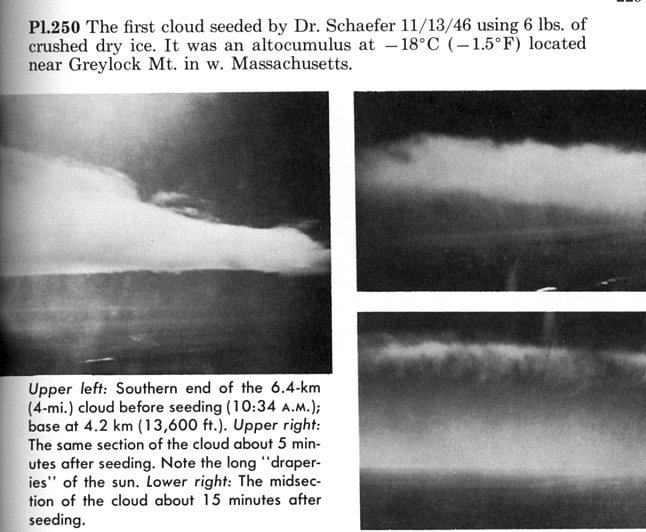
The first experiment did not produce as pretty pictures.]
Today we can use cloud seeding at appropriate times to make extra snow. That
snow can be used for skiing. When it melts, we can use the water for drinking,
for irrigation, for hydroelectric power, and for industrial uses. Cloud seeding
is a clean way of getting extra water into our system. And the process happens
just like you saw it here.
[Assuming that there is time available, do the snowstorm for
the third group of students.]
Back, Next
Home,
sequence,
equipment,
clouds,
vapor growth,
snowstorm,
crystal growth,
related topics,
water optics,
ice optics,
trouble shooting






